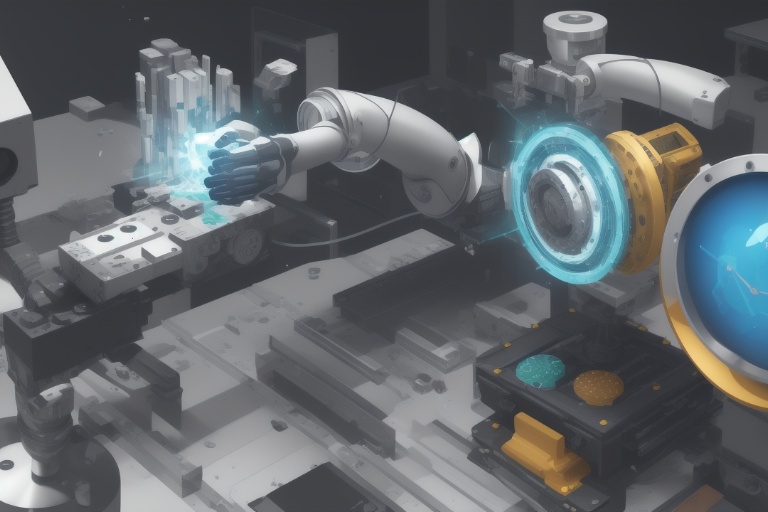Artificial intelligence (AI) and machine learning are at the forefront of the technological revolution, capturing the imagination of innovators, entrepreneurs, and the public alike. With their transformative potential, these technologies are fundamentally reshaping how businesses operate and compete in the global landscape. Though often used synonymously, AI and machine learning serve distinct purposes, and grasping this nuance is crucial for organizations seeking to capitalize on their capabilities. Below, we delve into the intricacies of these concepts, their real-world applications across various industries, and their vast potential to foster efficiency, automation, and data-driven decision-making.
Artificial intelligence (AI) and machine learning are at the forefront of the technological revolution, capturing the imagination of innovators, entrepreneurs, and the public alike. With their transformative potential, these technologies are fundamentally reshaping how businesses operate and compete in the global landscape. Though often used synonymously, AI and machine learning serve distinct purposes, and grasping this nuance is crucial for organizations seeking to capitalize on their capabilities. Below, we delve into the intricacies of these concepts, their real-world applications across various industries, and their vast potential to foster efficiency, automation, and data-driven decision-making.
The Distinction between AI and Machine Learning
AI represents the science of crafting machines that can emulate human intelligence, performing tasks that typically require human cognition such as visual perception, speech recognition, and decision-making. It is the umbrella term for machines equipped with the ability to reason, learn, and adapt. Machine learning, a critical component of AI, is a more focused domain. It centers on the development of algorithms and statistical models that enable computers to improve their performance on specific tasks through exposure to data, without being explicitly programmed for each instance.
The relationship between AI and machine learning is analogous to that of a tree and its branches: AI is the tree – the broader concept – while machine learning is a branch of that tree, specializing in a particular aspect of AI.
Transforming Industries through AI and Machine Learning
Manufacturing and Banking
In manufacturing, AI and machine learning streamline supply chain management and production processes. Predictive maintenance, powered by machine learning algorithms, anticipates equipment failures before they occur, reducing downtime and maintenance costs. In the banking sector, AI enhances customer service through chatbots and virtual assistants, while machine learning plays an indispensable role in fraud detection and risk management, sifting through vast data sets to identify anomalous patterns that might indicate fraudulent activity.
Healthcare
Healthcare is another industry that greatly benefits from AI and machine learning innovations. These technologies are improving diagnostics, personalizing treatment plans, and managing patient data. AI-driven analysis of medical images can detect diseases such as cancer more accurately and at earlier stages, while machine learning algorithms aid in deciphering complex genetic information, leading to more effective treatment strategies tailored to individual patients. Furthermore, AI helps alleviate healthcare provider burnout by automating administrative tasks, allowing medical professionals to dedicate more time to patient care.
Positioning for Success with AI and Machine Learning
For organizations eager to embark on their AI journey, the key lies in strategic implementation. This entails not only the adoption of advanced technologies but also the cultivation of a culture receptive to innovation and continuous learning. Training programs, such as the Artificial Intelligence executive certificate program offered by Columbia University, equip leaders and professionals with the knowledge to develop and execute effective AI strategies.
Embracing the Digital Future
The deployment of AI and machine learning is not just about technological advancement; it’s about embracing a new paradigm of efficiency, adaptability, and intelligence. By forging ahead with these tools, organizations can gain a competitive edge, redefining their industry and carving out a space in the digital future. As AI and machine learning evolve, staying abreast of these changes and understanding how to leverage their strengths will be critical for any organization aspiring to lead in its field.
In summary, AI and machine learning are driving forces behind today's wave of digital innovation. By distinguishing between these interrelated fields and thoughtfully integrating their respective technologies, businesses can unlock unprecedented growth opportunities. From enhancing operational efficiency to enabling data-driven insights and propelling automation, the potential applications of AI and machine learning are vast and varied. As industries continue to evolve in response to these advancements, those who have mastered the art of applying AI and machine learning will be well-positioned to thrive in this new era of technology-enabled transformation.
Information for this article was gathered from the following source.


